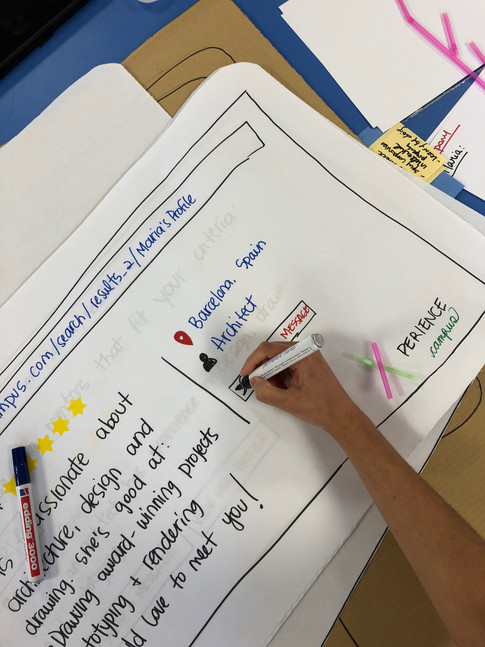We're Jamming: Service Design Edition
- Irene Cajas
- Oct 19, 2018
- 3 min read
About a month ago I attended the Global Service Design Jam, a worldwide event where designers meet to tackled wicked problems. Now, you might be wondering, what exactly is Service Design and more importantly what is a Service Design Jam. So let's start with the first one.
#ServiceDesign is all about designing the components of a service in order to improve its quality and the interaction between the service provider and its users. Service design helps create the stage or scenario for people to have memorable, personal and connected positive (or sometimes negative by lack of design) experiences with the services they interact with. This field uses the design thinking methodology to co-create touchpoints (interactions between users and a brand or organisation) by keeping the user at the centre of these interactions.

Every year around March, designers and like minded individuals from around the world, meet for 48 hrs to use the service design methodology and come up with solutions to wicked problems (problem that is difficult or impossible to solve because of incomplete, contradictory, and changing requirements that are often difficult to recognise). Themes, which vary from year to year, are unveiled globally on Friday eve and by Sunday at 3pm hundreds of new ideas are uploaded to the #GSDJ platform. This year the theme was: Yes, No, Maybe... and yes it was a shock to everyone participating. So how many ways can you go about facing such a challenge? Just browse through the submissions page for the Global Design Jam and see the hundreds of ways in which this was approached. Our group decided to tackle this from an educational perspective, and so we started thinking of how could we make free quality education available to everyone.
This challenge in and on itself was massive and incredibly complex (a truly wicked problem) but after a few rounds of brainstorming and talking to potential users, we narrowed it down even more and decided to tackle sharing of knowledge across different sectors by partnering with companies and their employees. We brainstormed all the different ways in which this scenario might look like, researched some companies already doing this (peer to peer learning and mentoring) and came up with a business model to make it sustainable. We then went back out to the streets to test it. We asked people if they saw any value in it, if they would use it, if they thought others would adopt it...and with this feedback went back to refining our model and prototype.
And so Xperience Campus was born! An initiative that aims to open up companies, their knowledge, best practices and experts to others so that learning and exchange of information can happen.
What we wanted to achieve with Xperience Campus was to give communities and people the opportunity to find mentors in areas of special interest to them (architecture, design, economics, biology, etc.) who work in different companies in the city. We wanted to connect professionals in the field with people who are considering moving into a new field; our aim was also to create a community of mentors and mentees, of sorts, that would be able to create lasting relationships in their professional lives.
Thousands of inspiring ideas came as a result of the 48hr Service Design Jam from designers all over the world. While the process was expedited, it was exciting to be able to take part in an event that shows the power of design as a tool to solve some of our most complex problems and how using this methodology you can create long lasting solutions for those problems. I am already looking forward to next year's #SDJ and what the challenge brings!








![The brave [me] us](https://static.wixstatic.com/media/4ea088_eac2aa2200a4447a95ceebf633c4b99d~mv2_d_2375_1621_s_2.jpeg/v1/fill/w_980,h_669,al_c,q_85,usm_0.66_1.00_0.01,enc_avif,quality_auto/4ea088_eac2aa2200a4447a95ceebf633c4b99d~mv2_d_2375_1621_s_2.jpeg)


Comments